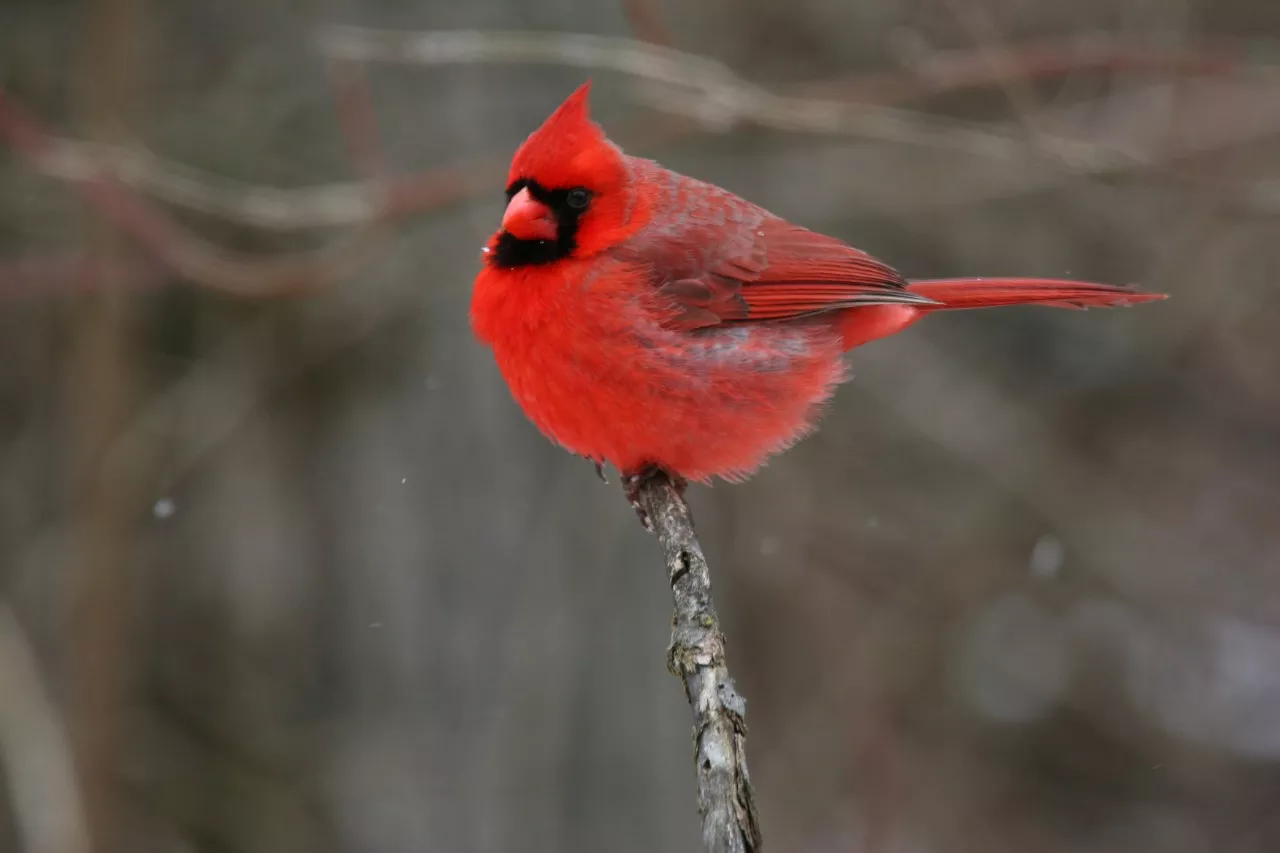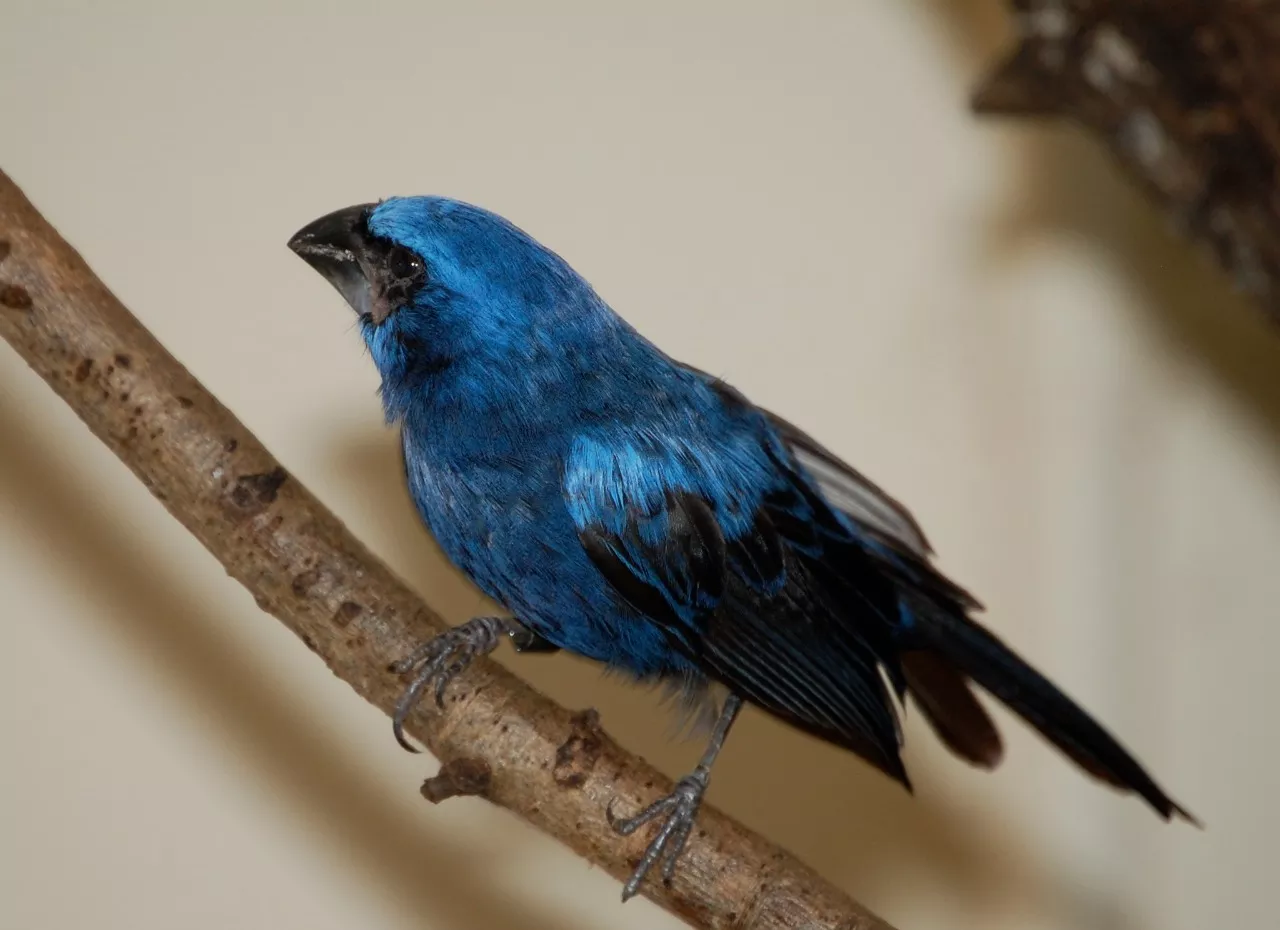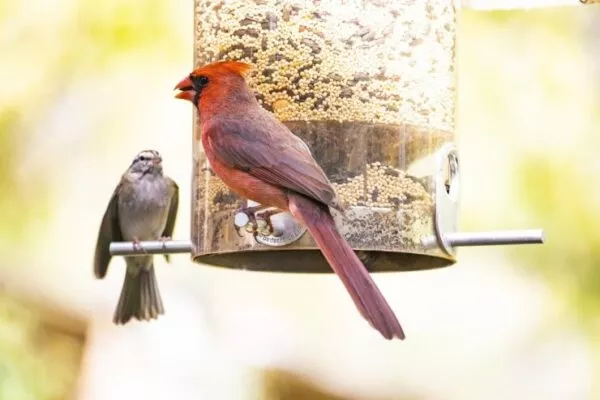There have been several reports of blue-colored birds that are often mistaken for cardinals. However, no official approval or confirmation of the blue cardinal bird has been made.
So, what do they see? Why do people mistake these birds for blue cardinals? You may read this guide to learn more about cardinal birds and the typical misunderstandings that happen when they are mentioned. Using the information on this page, you will be able to correctly identify the bird as either a cardinal or a different species entirely. Let’s get going!
Looking in Detail at What are Cardinals
Cardinals belong to the Cardinalidae family of passerine birds. These birds may be found in many places of the Americas, either naturally or as a result of human introduction. Within its species, there are numerous subspecies and types of these birds, but the bulk of them are red. Cardinal birds are known to be omnivores, however, they generally graze on seeds. These birds have distinguishing patterns and colors and may be seen in wide fields and woodlands. Cardinals come in a variety of sizes, depending on their subspecies.
Is there a blue cardinal bird?
No, blue Cardinal does not exist. Because of the subtle similarities in their looks, such as the prominent feather cap and black markings, it is common to misinterpret or misidentify birds of various species and colors as blue cardinal birds. However, it is vital to remember that neither researchers nor scientists have proven the appearance of a blue cardinal bird or provided any proof of their existence. If you see a blue-colored bird that you believe is a cardinal, it’s possible that you’re mistaking it for a different sort of cardinal or a different species entirely.
Elements of Confusion
The components listed below may cause this kind of mistake, leading individuals to assume they saw a blue cardinal bird.
Color
There are a number of additional blue-colored bird species. The blue jay and the blue grosbeak, for example, have striking blue coloring. This might cause folks to believe that what they’ve seen is a blue cardinal bird. Furthermore, certain birds’ colors vary with the seasons, and various sections of their bodies become more noticeable at different times of the year. For example, if certain birds have a concealed crown or blue hue, it may only emerge when the birds are in a specific mood or when the season is right. This makes it simple to mistakenly believe you’ve seen a bird that doesn’t exist.
Appearance
Several birds have similar looks, with certain aspects resembling one other more than others. Many birds, for example, have crowns that are comparable to those worn by cardinal birds. You could mistake one bird for another as a result of this.
Species
Birds of various species may share a number of qualities in addition to their physical appearance. Many species, for example, may have similar-sounding cries, mannerisms, and breeding characteristics. Furthermore, within the Cardinalidae family, there are various species that resemble each other in different ways. These species, such as grosbeaks and cardinals, may readily cause misunderstanding among birdwatchers and casual observers. As a result, anytime you see a particular bird, attempt to pick out its distinctive qualities, particularly the beak or bill, as well as the bird’s general size and form.
Distance and Lighting
External factors like as sunlight and distance may also cause some uncertainty regarding the kind of bird in front of you, depending on where you are looking. If it is too dark outdoors, for example, the color of the bird or the precise shade of it may seem to be different than it really is. The angle of the sun or moonlight may also provide the illusion of a different look. Similarly, if you are too far away from the bird, determining the precise color or traits may be difficult, leading you to assume you are looking at a blue cardinal bird.
Related: Brown Cardinals
Various Species of Cardinal Birds
Cardinals are perching songbirds that may be found in both North and South America. The Cardinalis genus is made up of just three legitimate cardinals. Cardinals are birds that belong to the same family but are from distinct genera. Cardinals have powerful seed-biting beaks, and males and females have varied color patterns. While the majority of cardinals are not endangered and are numerous, several are on the verge of extinction.
Red-crested Cardinal

Image Source
- Scientific name: Paroaria coronata
- Lifespan: Up to 10 years
- Size: Approximately 17-20 centimeters (6.7-7.9 inches)
- Origin: South America (native to Argentina, Bolivia, Brazil, and Paraguay)
Red-crested Cardinal is a South American native that has been successfully transported to semi-tropical and tropical places such as Puerto Rico and Hawaii. Seeds are their preferred food, although they may also consume tiny insects and arthropods that are near the ground. They are nicknamed cardinals because of their spectacular red crest, which is similar to that of other “cardinals.” They don’t have the same brilliant red all over, and their breasts and backs are white.
Pyrrhuloxia or Dessert Cardinal

Image Source
- Scientific name: Cardinalis sinuatus
- Life span: Up to 10 years
- Size: 20-23 cm (7.9-9.1 in)
- Weight: 42-50 g
- Origin: Southwestern United States and Mexico
This is a medium-sized Cardinalis species that may grow up to 8 inches in length, regardless of whether it’s male or female. It is found in the arid and dry southwestern United States and northern Mexico. The bill of this cardinal is quite small, making it perfect for breaking dry seeds. The main distinction between this cardinal and its northern relative is its coloring. They have a brownish-gray plumage with a red breast that resembles that of a robin. This cardinal is quite territorial during mating season, and males will become violent against competitors, protecting and singing to keep them away from their area.
Northern cardinal

Image Source
- Scientific name: Cardinalis cardinalis
- Life span: Up to 15 years
- Size: 21 cm (8.3 in)
- Weight: 33-65 g
- Origin: Eastern and Central North America
This is without a doubt the most popular and well-liked cardinal. According to research undertaken by Cornell University’s Lab of Ornithology, the male of this species is the bird most responsible for persuading individuals to start birding. They are without a doubt the birds that have prompted me to get binoculars and a high-quality camera. However, why? They may be seen and studied all year since they are not migratory birds. They are one of the simplest to see throughout the winter because of their unusual and absolutely attractive red hue, which sticks out like a sore thumb against snow-covered landscapes. Although female cardinals have duller plumage with more brown than red, the red accents on their tail, crown, and wings are still noticeable.
Vermilion Cardinal

Image Source
- Scientific name: Cardinalis phoeniceus
- Lifespan: Up to 10 years
- Size: Approximately 18-20 centimeters (7-8 inches)
- Origin: South America (found in regions such as Venezuela, Colombia, and Brazil)
This is a member of the genus Cardinalis that prefers to dwell in warmer climates than the others. It is endemic to the northern coast of South America, where subtropical habitats and severely arid scrub deserts coexist. They are typically found in Columbia and Venezuela. They are similar to their northern counterparts in that the males sing a similar-sounding song to claim their territory early in the morning. Cardinals with the brightest coloring are known as vermilions. The male vermilion cardinal has a vivid rose-red tone and the longest version of the crest that all cardinals share.
Birds that look like Blue Cardinals
Aside from cardinal bird species, you could see other blue-colored bird species. You may read more about them below.
Blue grosbeaks

Image Source
- Scientific name: Passerina caerulea
- Lifespan: Up to 5 years
- Size: Approximately 15-17 centimeters (6-7 inches)
- Origin: North and Central America (found in regions such as the United States, Mexico, and the Caribbean)
Blue grosbeaks are medium-sized birds that belong to the same family as other cardinals, making them even more easily mistaken for blue cardinals. Blue grosbeaks, unlike the other cardinals, do not have a crest on their heads. They are similarly mostly blue in color with a few brown markings, while females of this species are more brown.
Blue Jay

- Scientific name: Cyanocitta cristata
- Lifespan: about 7 years
- Size: 9 and 12 inches
- Native to: North America
Because of their crest, blue jays are often mistaken for blue cardinals. These birds, however, belong to a different family (Corvidae) and have distinguishing black patterns, black beaks, and white underbellies that distinguish them from cardinals. Their crests’ appearance is also heavily influenced by their emotions. Cardinals normally live in dry environments, however, they prefer wooded areas.
Blue-black Grosbeak

- Scientific name: Cyanoloxia cyanoides
- Lifespan: 6-7 years
- Size: 5 to 6-inch
- Native to: Middle America and northwestern South America
Songbirds called blue-black grosbeaks may be found in pairs at the borders of tropical lowlands’ wet evergreen woods. They are sexually dimorphic. Females have dark brown feathers with a tinge of crimson.
Males have dark blue wings and plumage, with lighter blue shoulder patches and eyebrows. A paler shade of blue may also be seen on the forehead. Similar to other bluebirds, this bird’s blue color derives from the way light reflects off of its feathers, not from pigmentation.
These omnivorous birds with blue and black feathers consume seeds, fruits, insects, snails, and other tiny invertebrates as food. Sometimes, blue-black grosbeaks may construct their nests using a snakeskin that has been shed.
Final Thoughts
Although color, species, lighting, and distance may have caused some misunderstanding, it is now evident that there are no blue cardinal birds. Instead, you may have seen another cardinal or a blue-colored bird, both of which have been discussed before.





